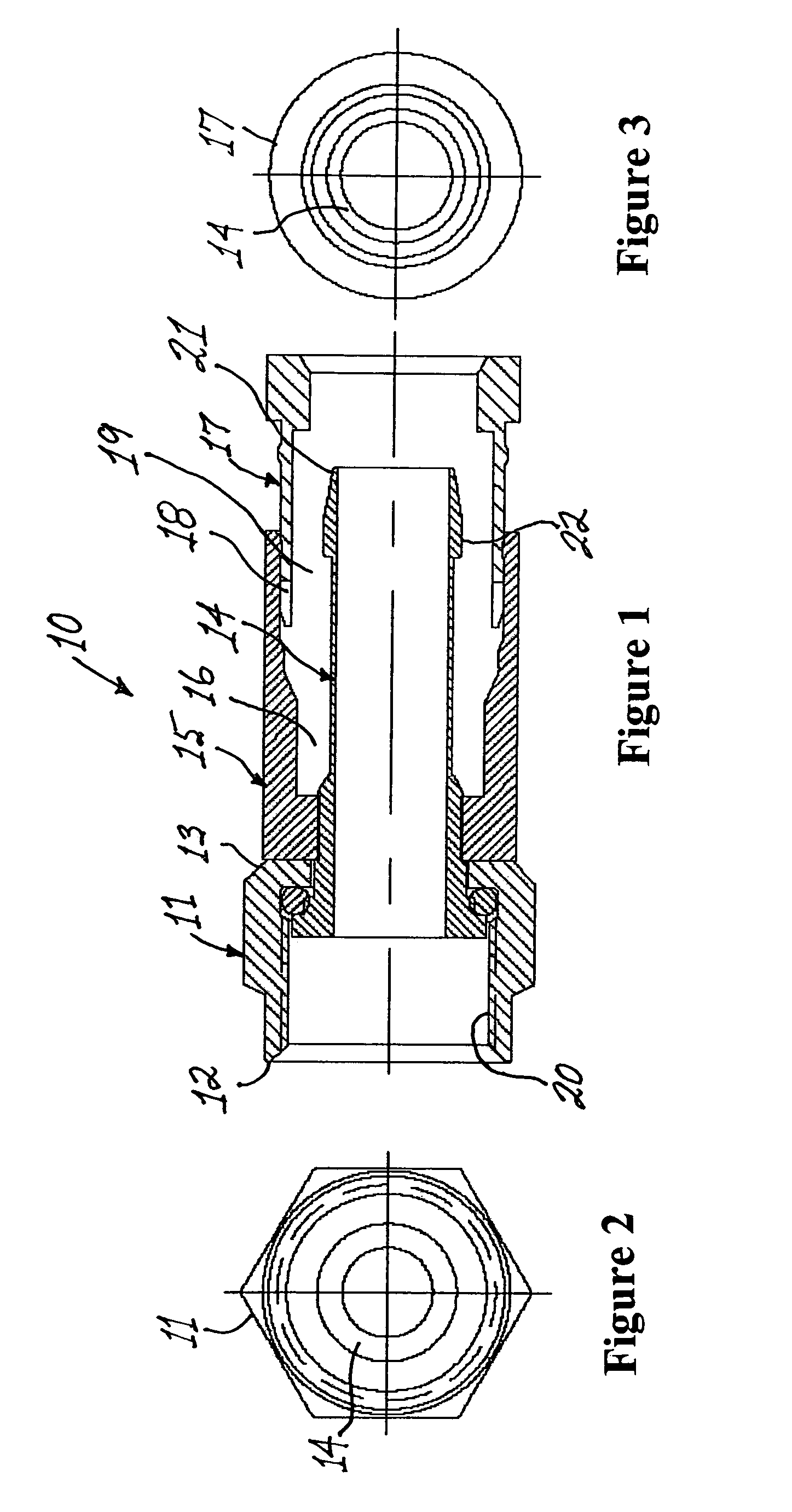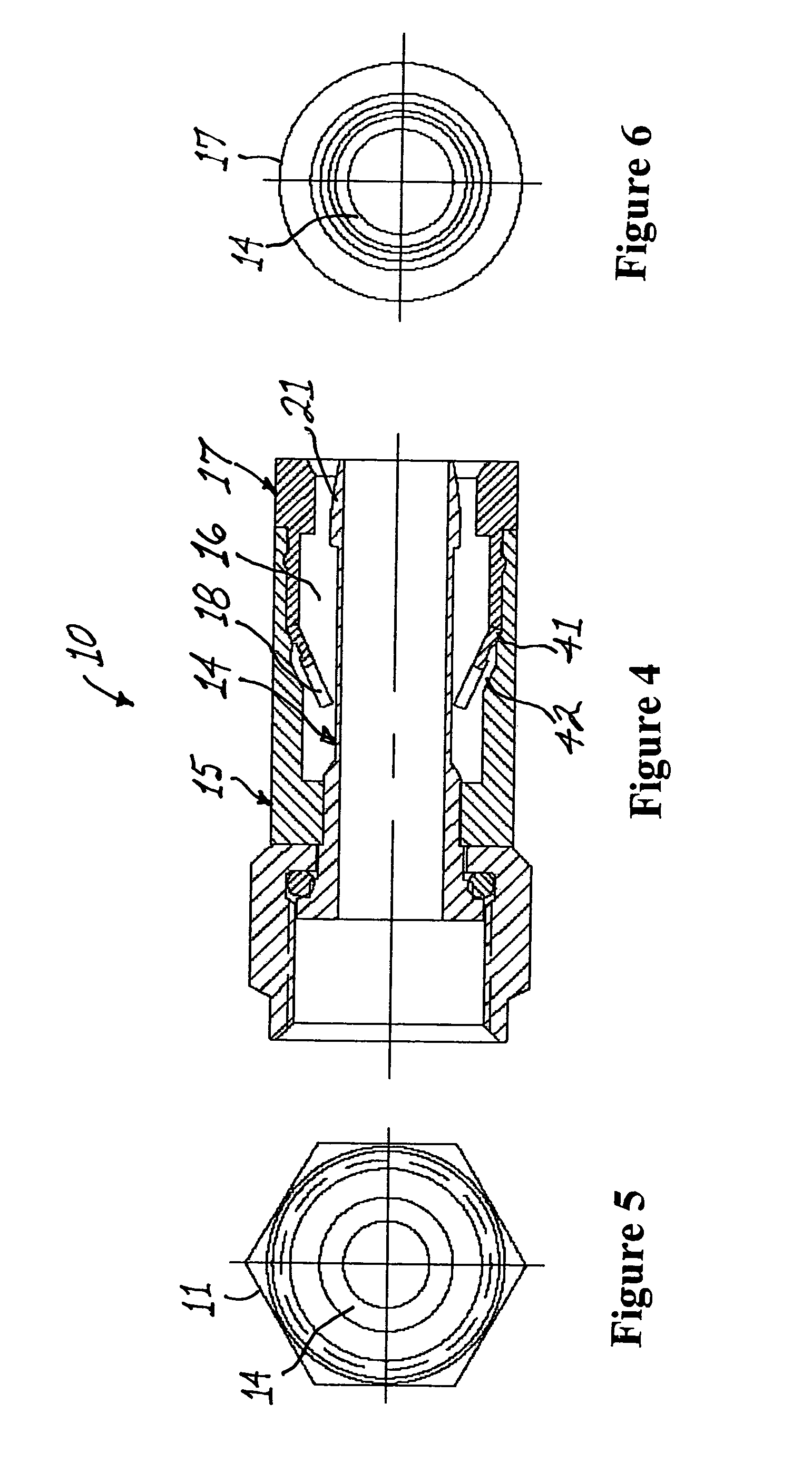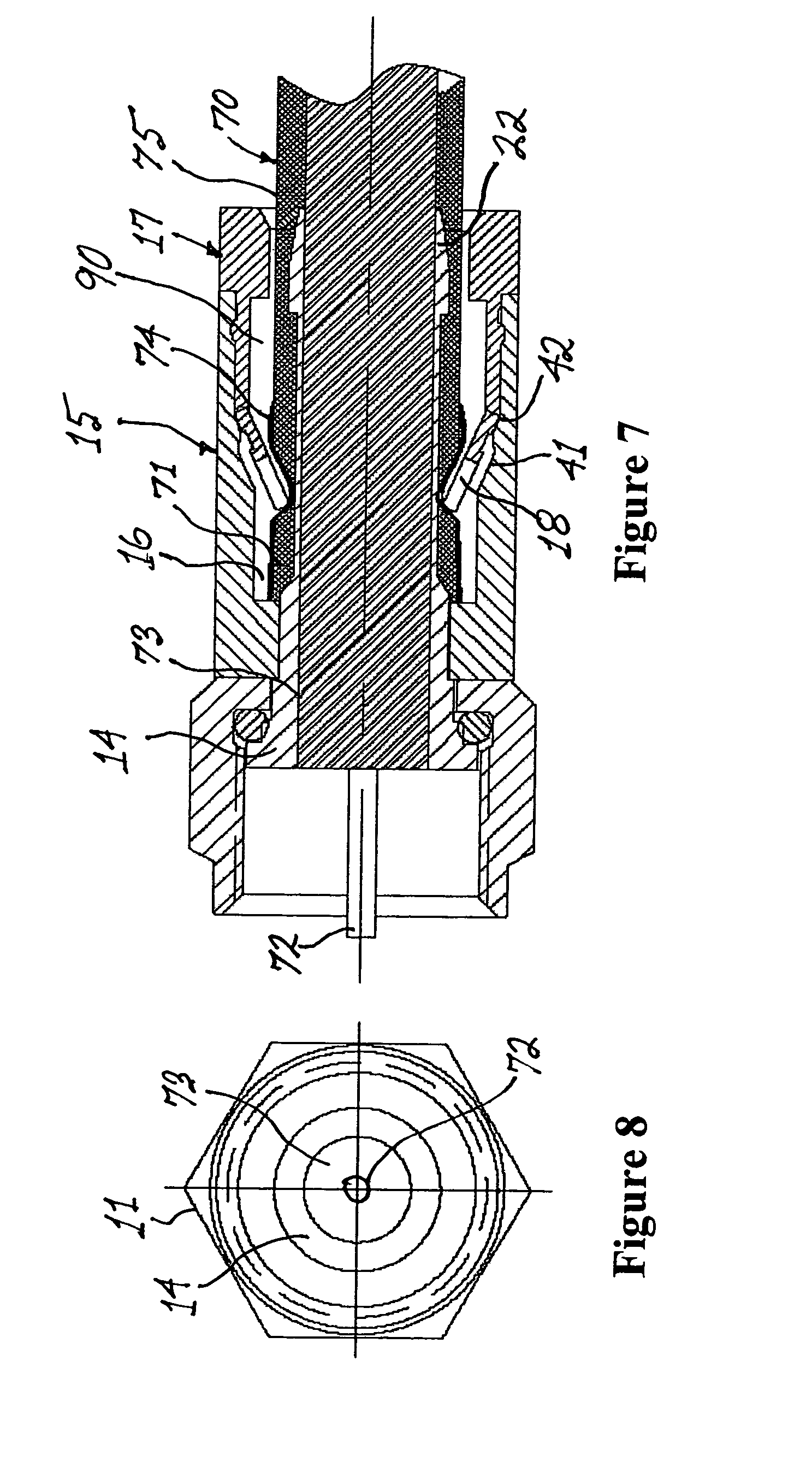Coaxial cable connector with deformable compression sleeve
a compression sleeve and coaxial cable technology, applied in the direction of electrical apparatus, connection, coupling device connection, etc., can solve the problems of connector loosening, connector loosening, connector loosening, etc., and achieve the effect of convenient alignmen
- Summary
- Abstract
- Description
- Claims
- Application Information
AI Technical Summary
Benefits of technology
Problems solved by technology
Method used
Image
Examples
Embodiment Construction
[0040]Prior to attaching a coaxial cable to a male connector, the end of the cable that will be receiving the connector must first be prepared. It will be understood by the artisan that the preparation of the end of the cable will be in accordance with the type of male coaxial cable connector that the cable 70 (FIG. 7) will be attached (i.e., F-type, BNC, RCA, etc.). In order to prepare the end of a coaxial cable to receive a male connector, a cutting tool is used by an installer to expose a portion of the central conductor 72, a length of the dielectric core 73 and a conductive (grounding) braid 74, as shown in FIG. 7. Again, the respective lengths of each of the elements comprising the coaxial cable 70 that are exposed by the cutting tool will depend on the particular type of male connector to be attached thereto and are in accordance with industry standards. Following exposure of the conductive braid 74, the exposed portion of conductive braid is flared and folded back to overlie...
PUM
 Login to View More
Login to View More Abstract
Description
Claims
Application Information
 Login to View More
Login to View More - R&D
- Intellectual Property
- Life Sciences
- Materials
- Tech Scout
- Unparalleled Data Quality
- Higher Quality Content
- 60% Fewer Hallucinations
Browse by: Latest US Patents, China's latest patents, Technical Efficacy Thesaurus, Application Domain, Technology Topic, Popular Technical Reports.
© 2025 PatSnap. All rights reserved.Legal|Privacy policy|Modern Slavery Act Transparency Statement|Sitemap|About US| Contact US: help@patsnap.com



